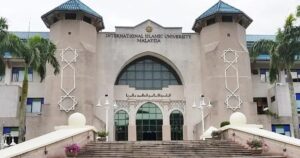
Two academics have warned that Malaysia’s ambition to become a leader in artificial intelligence (AI) by 2030 may be out of reach because of the filtering interest in science and technology-related courses.
Universiti Sains Malaysia’s Selvakumar Manickam said the country cannot build the AI talent pipeline it needs without a strong foundation in science, technology, engineering and mathematics (STEM).
He said fewer young Malaysians are opting for science and mathematics, which could leave the nation short of skilled workers in key technology sectors.
“This is particularly worrying as a strong STEM foundation is critical in preparing the next generation for an AI-driven future,” said Selvakumar, who heads USM’s Cybersecurity Research Centre.
“Without renewed emphasis on STEM education, we risk falling short of the talent required to sustain meaningful AI progress. While the national goal of becoming an AI nation by 2030 is commendable, it may be overly ambitious given our current capacities.”

Selvakumar said public universities have made good progress in teaching and applying AI, but more work is needed to develop homegrown innovation.
“Our universities are proficient at using existing AI tools, but we must also learn to build our own. We need to evolve from being users to becoming creators of new technology,” he said in response to the 2026 budget in the tech sector, tabled last Friday.
Universiti Putra Malaysia’s Azizol Abdullah agreed that science education must start earlier in schools.

“At the university level, STEM education is manageable. The real challenge is at the school level. We need to attract students to STEM much earlier,” said Azizol, who heads UPM’s wireless, mobile and quantum computing research group.
Last year, the two public universities in Penang, USM and Universiti Teknologi Mara Permatang Pauh reported having fewer than 1,000 electrical and electronics (E&E) students combined, far below capacity.
Nationwide, 16 public universities offer E&E-related courses with about 18,000 students in total, but only a handful have more than 2,000 each.
Industry players say these numbers must double by 2030 to meet growing demand.
The government has also acknowledged a shortage of 50,000 engineers in the E&E sector, with local universities producing only about 5,000 graduates a year.
The Malaysia Semiconductor Industry Association has also warned that many factories are struggling to hire new engineers amid a worsening talent crunch.
Tabling the 2026 budget, Prime Minister Anwar Ibrahim said Malaysia’s future growth hinges on mastering AI and innovation.
He announced that nearly RM5.9 billion will be allocated for research and innovation, while RM2 billion will fund the Sovereign AI Cloud to secure national data.
Another RM15 million will go towards initiatives such as the Malaysia Techlympics and National Science Week to boost interest in science and technology.
Anwar said the government will also strengthen the National Artificial Intelligence Office and support universities in key AI fields such as semiconductors, medicine, cryptology, and digital technology.





